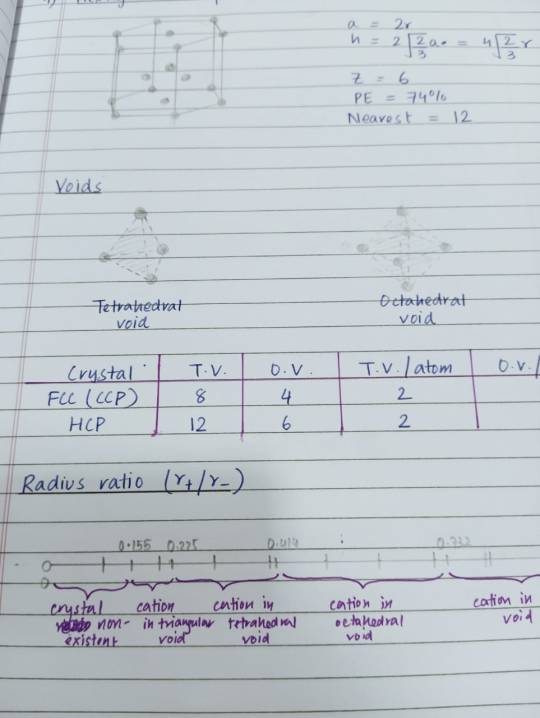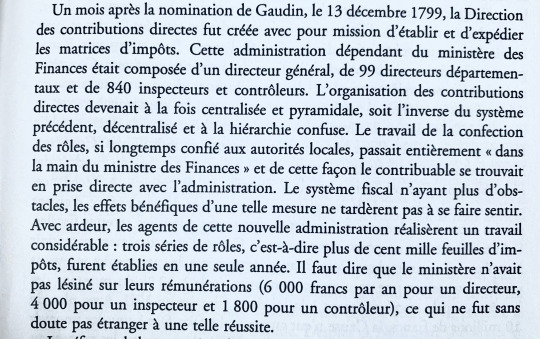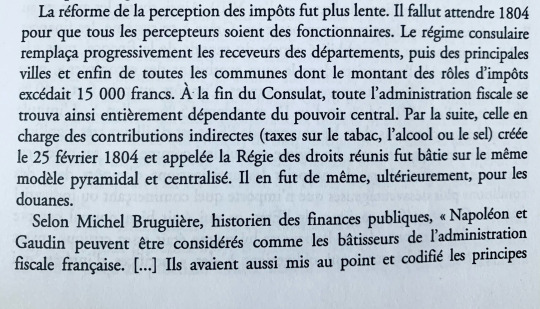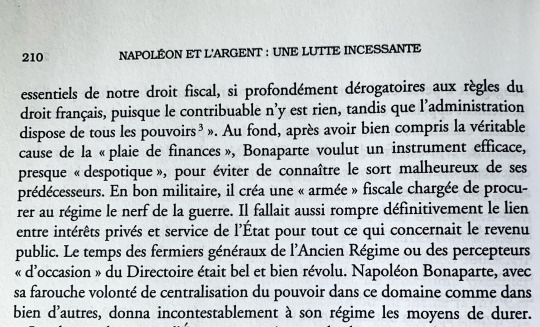#Matric Assignments
Explore tagged Tumblr posts
Text
AIOU Assignments Autumn 2023
If your student of Allama Iqbal open University (AIOU) and looking for Assignments for the semester Autumn 2023 then your on right spot. In this post we will guide you through how you can download AIOU Assignments for the semester autumn 2023. Please follow these steps to download AIOU Assignments Autumn 2023 Click Matric, Intermediate or Bachelors to visit the relevant page. Once your reach…

View On WordPress
#aiou assg#aiou assignments#AIOU ASSIGNMENTS AUTUMN#AIOU ASSIGNMENTS SPRING#fa assignments aiou#Matric Assignments#matric assignments aiou
0 notes
Text
LINEAR ALGEBRA STOP PLS STOP
#when will carrot stop yapping?#prof is making us multiply matrices with numbers w/ three decimal points to make a point about rounding#WE GET IT#SO WHY IS THIS A HW ASSIGNMENT#EVERYONE IS GETTING DIFFERENT NUMBERS#AND WE ARE NOT ALLOWED TO USE SOFTWARE
2 notes
·
View notes
Text
What are they teaching this hamster?

So I was rewatching this scene and I happened to take a look at the book Hibiki is studying and...

Those are matrices.
Are they teaching linear algebra at Lydian? No wonder this hamster is always late on her assignments, that's like a junior-level college course!
384 notes
·
View notes
Note
maybe a little bit too specific of a question. but. You mentioned that all cybertronians have "progenitors"- i was wondering if any of the original primes had contributed their parts to creating other bots? (follow up question if that's true: is it considered a "sacred bloodline" (energonline?)? are there small traces of the og primes in every cybertronian? something else?)
I love this question!!
Cybertronian lineages are a bit complicated—just to clarify the “progenitor” thing a little more, I’d say they’re sort of like fungus, coral, or jellyfish. When I say they contribute genetic material or parts to offspring, I mean that they literally do contribute physical parts of themselves which eventually grow into an entirely separate organism, and that reproduction can happen completely asexually, where the resulting Bot is a 1 to 1 clone, or “sexually,” where multiple ‘Bots contribute organic material to a single offspring resulting in not only greater variance, but a reduced negative physical impact on the “parents.”
While the exact historical timeline of most of the Primes is not known, it is concretely believed that, with one very notable exception, none of them have “ancestors.” Though they are known as originators, Cybertronians aren’t directly descended from them, and the early genetic groups were instead more like cousins or siblings to eachother. Those disparate groups eventually commingled and that resulted in the modern Cybertronian diaspora.
The reason for the Primes never “reproducing,” at least not publicly, is political/theological. There’s a lot of religious baggage tied up in the hierarchy of Cybertronian life where the Primes are the first and most perfect beings, so any one of them having a descendant would raise a lot of understandable questions about the Godhand and its implications on the rigid divine hierarchy’s mutability—in short, it would be a bit of a mess! The Matrices are a halfway solution to this problem, but before I get into those, I should probably mention the Notable Exception.
So, there is one Prime with technical “offspring,” and that is Quintus. The Quintessons are Quintus Prime’s creation, and though they were deliberately engineered in a process that is quite a bit more complicated, they do have his CNA. Their existence very famously led to the end of the feudal hierarchy and a new era of caste-based determinism where social value and divine right were assigned via function. The Quintessons brought about an era where old flesh was no longer immutable and absolute, opening the floodgates for the philosophy of mechanization and new flesh. This (and the fact that, well, most of the original Primes are dead now) is why he is the exception—every acting Prime knows that the Godhand is dangerous.
That said, though, there is certainly an impetus for successors, and that’s where the Matrix came about. Because the exchange of genetic material isn’t always 1 to 1, you don’t have to be a direct parent to pass on material to another ‘Bot, or vice versa. In the right conditions, with the right material, a Cybertronian can absorb somebody else’s material to become genetically similar to them.
A Matrix is an isolated piece of an original Prime. While it’s hardly enough to overwrite the host organism, the Matrix bearer essentially integrates that material, absorbing the polyp sort of like a parasitic twin in utero, and technically changing the bearer’s CNA. So, in that sense, you can say all Primes are descendants of the originals!
Sorry for the long response, I hope this gave you the info you were looking for! I loved this question and I’ve put a lot of thought into this subject :)
90 notes
·
View notes
Text
Senkaimon Travel Procedures

"There are many benefits to being a marine biologist."
Even though 99.99% of interdimensional travel is baked into normal Gotei procedures that shinigami use every single day, I feel like the Gotei has probably made it difficult for no other reason than it's not anyone's job to make it not difficult.
Like, it'd be nice if you could receive your Living World Assignment and then, at 7AM on launch day, show up at a senkaimon and go through it. Cake! (Or--well, you know what I mean, this being Soul Society.)
But I feel like this line from my work’s website about there being "many benefits to using a travel management system" exists because our previous travel management system was so bad it felt like it should be regulated by the state as a form of gambling. I see no reason why the Gotei's version would NOT be like this. So:
You cannot, in fact, simply show up and walk through a senkaimon, on the date the Gotei itself told you you would need to do so. You need to go to the physical Travel Management Office, which is run by like two dudes from the Kidou Corps.
You will give them your deployment summons, which they will cross-reference with the copy they may or may not have received. (You need to time your trip to the Travel Management Office such that you have enough time to make your arrangements, but the mail also has enough time to make it through the entire Seireitei postal system.)
Despite the fact that this paperwork is handled entirely analog, the next part of this process involves a giant mainframe like the ones they have at the 12th. It prints data matrices that only these two Travel Management Office Kidou Corps guys can translate into dates, times, and--most importantly--prices.
Yes, you have to pay to use the Senkaimon. Well, not you personally. Your Division does. But you will at some point have to submit your receipts to your finance officer along with your other qualified expenses and it's a whole thing.
Also you had to submit a budget for your own mission that the Gotei is telling you to go on, but you had to base those prices on Death.Net's info, which is not the same info as these Travel Management Guys have.
By the time they've translated and you've selected, the mainframe prints out another matrix. Cue more translating, and more selecting, because the senkaimon time/date you've chosen is now a completely different price, well above what was originally printed. It's also at a different time, and a different day... (+/- 2-17 hours).
Expect to go through this several times, choosing time/date/price packages completely at random because you know that by the time they come back for second confirmation they'll be different. This is the gambling part of your trip to the Travel Management Office (you set aside the whole afternoon, right? You told your 10th Seat where you were going?).
The constantly shifting data is because despite being the "refined" way to travel to the Living World and back, senkaimon travel is still fairly complex, and the ability to travel (or how much energy it takes, hence the cost) is dependent upon... who knows. Solar flares. Whimsy. The stoichiometry of souls. How many people are on duty at the Kidou Corps. Obama. Bitcoin.
Speak of "and back"!!! You need to arrange that, too! If you miss your date, imagine doing all of this. But via denreishinki, instead of in person. Imagine.
Those fancy trips where it seems like captains/VCs just jump through a senkaimon? It's because instead of arranging a particular "flight" they just bought out every single opportunity within a block. This is hideously, hideously expensive. But: 1) Sometimes it's subsidized by the Central 46, if the circumstance is dire enough (but it's a reimbursement, not an advance. So, fill out that paperwork when you get back, if you don't die!). 2) This can be paid for with personal funds if it's in excess of the division budget. What else are they gonna do with all that money, right?
Even this doesn't mean there will be an instantly available senkaimon portal to avail oneself of, so sometimes after spending 7 million kan to buy out a senkaimon block you still have to wait a bit behind the doors in that little receiving room space. Yeah.
It's possible to have someone else go to the Travel Management Office and make your arrangements for you, if you have better things to be doing. But a lot of Captains/VCs actually still go themselves, either for security clearance reasons (you can't outsource your travel plans if you're on a top-secret mission lmao), or because they're private and don't want people handling their business. This means if you're the two guys who work at the Office, it's a pretty cushy gig if you're into meeting celebrities (or what passes for them in this place).
The only downside is that they're almost universally in a rush and fucking angry that they're at the Travel Management Office.
As they say, never meet your heroes!
#the level of orgasmic glee i get at the thought of imagining my faves in a rush and fucking angry they're at the travel management office!!!#bulletproof kink#ungodly sexy that's what the gotei travel management office is#shinigamiology#bleach headcanons#no brain just bleach
35 notes
·
View notes
Text
When the math department falls quiet at 6:00pm, and my mind subsequently grows louder, I find strange comfort in sitting upon the floor of a fluorescently lit room among students equally overloaded with pre-thanksgiving assignments.
Among them, I am safe. I am free to return to my epsilons and deltas, my linear forms, linear transformations, bases, and the matrices that describe them. Finally, my pencil can return to the page, working to understand how one proves a sequence of functions converges uniformly,
and someday how to prove, for myself, that I truly deserve this life.
10 notes
·
View notes
Text
I have an idea on how to handle rendering in Project Special K in a general way but without constantly cycling state for every goddamn cliff or whatnot.
(You should be aware that the cliffs have separate mesh parts for the grass and rock bits, so they can have different textures and shaders. Yes, even the shaders, because the grass dynamically changes color through the year and switches to a snowy base texture in winter. And that's saying nothing about the rivers!)
So instead of having Model::Draw do so directly, have it put the required data (texture set, VAO, matrices) for each mesh into a special structure, which goes into a bucket. When the bucket gets too big or is manually flushed, its contents are first sorted by VAO, then texture, and then actually rendered in that order.
(For those who don't know: a Vertex Attribute Object is what defines a mesh in OpenGL, binding together a Vertex Buffer Object (the vertex data cloud), an Element Buffer Object (indices, so you can have two connected triangles reuse their common vertices), and the attribute data (how to interpret the VBO) into one easily-reusable thing. At least that's how I understand it by now.)
So when drawing for example the ground for an acre with a few cliff tiles, the bucket would be filled with mostly plain ground tiles, and those cliff tiles of various connectivity and rotations. The plain ground has one VAO and one texture, while the cliffs have two VAOs and textures each, and different cliffs have different VAOs because a straight side part is of course not the same as a corner part.
Sorting by VAO, "emptying" the bucket would draw the plain ground, the rocky sides of the straight cliffs, the sides of the corner cliffs, and the grassy ends of the cliffs separately, but grouped exactly like that, with the groups appearing in whatever order the VAOs were assigned a number by OpenGL.
That reduces the number of state-changing calls (binding textures, VAOs, shaders etc) considerably compared to drawing the entire tile as a whole! Imagine having a full acre's worth of ground tiles (16×16) where some are flat grassy ground, some are stone paths, some are cliffs of some shape, and some some a river. Naively going through the map from left to right top to bottom, worst case scenario you'd have to switch out a new set of VAO, shader, and texture binds for every individual tile.
And if you want to force the same order as Animal Crossing New Horizons (which is apparently: players and villagers, objects, buildings, ground, sky, translucent bits, weather effects), just empty the bucket in preparation, render the players and villagers, empty the bucket again, render the placed and dropped objects, empty the bucket...
Note that in that sentence "render" means "put the request to render in the bucket" and "empty" means "sort then actually render the bucket's contents".
Does any of that make sense?
10 notes
·
View notes
Text
Countdown to JEE (Main): Week 2/33



I've done a lot this week! Hit almost all the topics I wanted to. You'll notice that there are some topics I've covered but not solved questions for — these are the ones I studied for the first time and/or made notes for.
Other than that, I have my school unit tests from next Wednesday, so there's that. Sadness.....
Test results:
Test at physics tuition center: 116/120, rank 1/67! Yay!
Aryabhatta National Mathematics Competition: score unknown, result expected on 10/07/2024.
Topics covered:
Physics: Potential and Capacitance; Electromagnetic Waves, Waves on a String; Modern Physics; Gravitation; Electromagnetic Induction (6/3)
Chemistry: Chemical Thermodynamics; Atomic Structure; Chemical Equilibrium; Halogen Derivatives; Solid State (5/3)
Mathematics: Differential Equations; Area Under a Curve; Applications of Derivatives; Determinants; Complex Numbers; Ellipses; Hyperbola; Binomial Theorem; Functions (9/3)
Questions solved:
Physics: - FIITJEE Electrostatics* module, Assignment section — 56 questions, 52 correct - Allen Potential and Capacitance module, O1 and O2 — 88 questions, 77 correct -FIITJEE JEE (Main) archives, Electromagnetic Waves — 12 questions, 10 correct - Allen Waves on a String module, O1 and O2 — 67 questions, 59 correct - FIITJEE JEE (Main) archives, Modern Physics — 40 questions, 34 correct - Allen Gravitation module, O1 and O2 — 61 questions, 55 correct Total: 383/60 questions, 287 correct *FIITJEE includes Potential and Capacitance under Electrostatics, while Allen does not.
Chemistry: - Allen Chemical Thermodynamics module, S1 and S2 — 40 questions, 37 correct - R. N. Sarin, Atomic Structure — 18 questions, 18 correct - R. N. Sarin, Chemical Equilibrium — 11 questions, 11 correct - Allen Halogen Derivatives module, JEE (Advanced) archives — 24 questions, 22 correct Total: 93/60 questions, 88 correct
Mathematics: - Allen Differential Equations module, O1 — 30 questions, 25 correct - Allen Area Under a Curve module, Do Yourself 1, 2, 3, 4, 5 and O2 — 51 questions, 46 correct - FIITJEE JEE (Main) archives, Applications of Derivatives — 45 questions, 39 correct - FIITJEE JEE (Main) archives, Determinants — 22 questions, 17 correct - Yellow Book, Complex Numbers, single-choice questions — 20 questions, 17 correct - Pink Book, Ellipses, single-choice questions — 16 questions, 14 correct - Yellow Book, Binomial Theorem, single-choice questions — 15 questions, 12 correct - Pink Book, Hyperbolas, single-choice questions — 21 questions, 18 correct - Allen Functions module, O1 and JEE (Main) archives — 48 questions, 44 correct Total: 268/60 questions, 232 correct
GRAND TOTAL: 744/400 questions, 607 correct
Upcoming tests:
23/06/2024 (next Sunday) — Allen monthly test. Topics: Kinetic Theory of Gases; Physical Thermodynamics; Electrostatics; Potential and Capacitance; Current Electricity; Electromagnetic Induction; Alternating Current; Electromagnetic Waves; Waves on a String; Sound Waves; Ray Optics; Wave Optics; Circle; Functions; Differentiation; Applications of Derivatives; Indefinite Integrals; Definite Integrals; Area Under a Curve; Differential Equations; Matrices; Silicates; Molecules That Do Not Exist; Coordination Chemistry; Metallurgy; Electronic Displacement Effects; Halogen Derivatives; Atomic Structure; Chemical Equilibrium; Solid State; Solutions; Chemical Kinetics; Chemical Thermodynamics. Yeah. I've no idea how I'm going to finish the syllabus in time, since I haven't even started Coordination Chemistry, Metallurgy or Alternating Current — they finished the classes in Allen before I even joined the batch. Anyway, let's see.
That'll be all till next week — see you again!
#studyblr#desi studyblr#study blog#jee 2025#joint entrance examination#jee mains#jee advanced#weekly studyposting#porashona
26 notes
·
View notes
Text
AIOU STUDIO9 Matric Assignments Free Download
AIOU STUDIO9 Matric Assignments : Free and Accessible for All Students! Are you a Matric student at Allama Iqbal Open University (AIOU) looking for comprehensive and free assignment help for the semester? Look no further! AIOU STUDIO9 is here to support your academic journey with top-quality resources that won’t cost you a penny. Why Choose AIOU STUDIO9 for Matric Assignments? At AIOU STUDIO9, we…

View On WordPress
#AIOU ASSIGNMENT 2024#aiou assignment pdf#AIOU Matric Assignment#AIOU MATRIC ASSIGNMENTS 2024#AIOU MATRIC ASSIGNMENTS SOLVED#AIOU STUDIO 9 MATRIC#MATRIC ASSIGNMENT AIOU#MATRIC ASSIGNMNET FREE
0 notes
Text
Changes to the Tax Collection System in Revolutionary and Napoleonic France
My translation from Le prix de la gloire: Napoléon et l’argent by Pierre Branda.
This part is specifically about the reforms made to the tax collection system. Problems with taxation had been the source of many woes, so it went through major changes.
“The [tax] work of the Consulate mainly concerned the reorganization of tax collection. Until now, this essential element was not administered directly by the Ministry of Finance. The Constituent Assembly had wanted the tax rolls for direct contributions, that is to say the ‘tax slips’, to be established by municipal administrations. Their work was complex, because each year it was necessary to draw up a list of taxpayers, determine each person’s share of tax and send them the amount of the contribution to pay. Poorly motivated (or even corrupt), the municipalities had put little care in the execution of their mission since a large part of the taxpayers had not yet received anything for their taxes of year VIII, or even of year VII or year VI. Also, with two or three years of delay in preparing the rolls, it was not surprising that tax revenues were low (nearly 400 million francs were thus left outstanding). If the sending of tax matrices left something to be desired, the collection of direct contributions was hardly better. The tax collector was also not an agent of the administration: this function was assigned to any person who agreed to collect taxes with the lowest possible commission (otherwise called ‘collecte à la moins-dite’). With such a system, there were numerous inadequacies, often due to incompetence, but also due to the prevailing spirit of fraud. However, in their defense, the profits of the collectors were most of the time too low to provide such a service; also, to compensate for their losses, they were ‘forced’ to multiply small and big cheats. In any case, in such a troubled period, letting simple individuals carry out such a delicate mission could only be dangerous for the regularity of public accounts. In short, the mode of operation of taxation that Bonaparte and Gaudin inherited was failing on all sides and threatened to sink the State.”
“One month after Gaudin’s appointment, on December 13, 1799, the Directorate of Direct Contributions was created with the mission of establishing and sending tax matrices. This administration, dependent on the Ministry of Finance, was made up of a general director, 99 departmental directors and 840 inspectors and controllers. The organization of direct contributions became both centralized and pyramidal, the opposite of the previous system, decentralized and with a confused hierarchy. The work of preparing the rolls, for so long entrusted to local authorities, passed entirely ‘in the hands of the Minister of Finance’ and in this way the taxpayer found himself in direct contact with the administration. The tax system no longer having any obstacles, the beneficial effects of such a measure did not take long to be felt. With ardor, the agents of this new administration carried out considerable work: three series of rolls, that is to say more than one hundred thousand tax slips, were established in a single year. It must be said that the ministry had not skimped on their pay (6,000 francs per year for a director, 4,000 for an inspector and 1,800 for a controller), which was undoubtedly not unrelated to such success.”
“Tax reform was slower. It was not until 1804 that all tax collectors were civil servants. The consular system gradually replaced the collectors of the departments, then of the main cities and finally of all the municipalities whose tax rolls exceeded 15,000 francs. At the end of the Consulate, the entire tax administration was thus entirely dependent on the central government. Subsequently, the one in charge of indirect contributions (taxes on tobacco, alcohol or salt) created on February 25, 1804 and called the Régie des droits réunis was built on the same pyramidal and centralized model. It was the same later for customs.”
“According to Michel Bruguière, historian of public finances, ‘Napoleon and Gaudin can be considered the builders of the French tax administration. [...] They had also developed and codified the essential principles of our tax law, so profoundly derogatory from the rules of French law, since the taxpayer has nothing to do with it, while the administration has all the powers’. Basically, after having clearly understood the true cause of the ‘financial wound’, Bonaparte wanted an effective, almost ‘despotic’ instrument to avoid experiencing the unfortunate fate of his predecessors. As a good soldier, he created a fiscal ‘army’ responsible for providing the regime with the sinews of war. It was also necessary to definitively break the link between private interests and state service in everything that concerned public revenue. The time of the farmer generals of the Ancien Régime or the ‘second-hand’ collectors of the Directory was well and truly over. Napoleon Bonaparte, with his fierce desire to centralize power in this area as in many others, undoubtedly gave his regime the means to last.”
French:
Page 208

Page 209



Page 210

#Le prix de la gloire: Napoléon et l’argent#Le prix de la gloire#Napoléon et l’argent#napoleon#napoleonic era#napoleonic#napoleon bonaparte#19th century#first french empire#1800s#french empire#france#history#reforms#finance#economics#french revolution#frev#la révolution française#révolution française#Gaudin#tax#tax collection system#taxation#law#napoleonic code#source#french history#branda#Pierre branda
36 notes
·
View notes
Text
The Complete NEET PG Counseling Blueprint for 2025 Aspirants
Securing a postgraduate seat in India’s highly competitive medical education landscape is no small feat—it’s a thrilling challenge and a pivotal career milestone. At the core of this pursuit lies the NEET PG (National Eligibility cum Entrance Test for Postgraduates), the essential gateway to advanced medical studies. But excelling in the exam is only the beginning. The real test begins with navigating the multifaceted NEET PG counseling process, where expert guidance becomes your most valuable ally. This is where Edusquare emerges as a game-changer—empowering medical aspirants with strategy, clarity, and confidence.
Understanding the NEET PG Counseling Process
Before diving into how Edusquare can elevate your journey, it's crucial to understand the counseling framework. Managed by the Medical Counselling Committee (MCC), 50% of the seats fall under the All India Quota (AIQ), while state authorities administer the other half. The counseling process includes several vital phases:
Registration: Begin by signing up on the MCC or relevant state portal.
Fee Payment: Submit the required counseling fees to participate.
Choice Filling & Locking: List your preferred colleges and courses and finalize your choices.
Seat Allotment: Based on your rank, preferences, and seat availability, institutions are assigned.
Reporting: Once allotted, candidates report to their respective institutions to complete formalities.
Given its high-stakes nature and intricate procedures, professional support is key to making informed and strategic decisions.
Why Choose Edusquare?
Edusquare has become a trusted companion for NEET PG counseling aspirants, offering a blend of insight, experience, and personalized care that truly sets it apart.
1. All-Inclusive Counseling Services
From the first step of registration to the final admission handshake, Edusquare provides seamless, end-to-end assistance. Their team ensures you avoid common pitfalls while maximizing your chances of success.
2. Mentorship That Matters
With a team of seasoned experts well-versed in medical education trends and seat dynamics, Edusquare equips candidates with data-backed insights to refine their choices and strategies.
3. Customized One-on-One Guidance
Understanding that no two journeys are the same, Edusquare offers personalized sessions to address your unique concerns, aspirations, and preferences.
4. Live Updates & Accurate Information
With ever-changing rules and timelines, staying updated is critical. Edusquare keeps you informed with real-time alerts on dates, changes, and seat matrices, ensuring no opportunity slips through the cracks.
5. Simulated Mock Counseling
To reduce uncertainty and boost readiness, Edusquare conducts mock counseling drills. These practice sessions prepare you for the real process and instill confidence.
6. Beyond Seat Allotment
The support doesn’t stop once you’ve secured a seat. Edusquare also assists with document verification, institutional reporting, and post-counseling concerns to ensure a smooth transition.
Real Results: Aspirants Speak Out
The success of Edusquare is best reflected in the words of those who’ve made it:
Dr. Ananya Sharma: “The counseling process was overwhelming until I found Edusquare. Their step-by-step support helped me get into a top-tier medical college.”
Dr. Rahul Verma: “The mock sessions at Edusquare made all the difference. I approached the real counseling with confidence and clarity—and it paid off!”
Your NEET PG Success Story Starts Here
In the fast-paced, competitive world of NEET PG counseling, having expert support can be the difference between confusion and clarity—or even between success and missed opportunities. Edusquare brings together deep expertise, personalized mentorship, and real-time insights to help you confidently move forward. Your medical dreams are within reach. Let Edusquare be the guiding light on your path to postgraduate success.

2 notes
·
View notes
Text
Purpose This project is the second of four projects. It also represents the second part of the external environmental analysis part of a strategic management plan. You will use the tools and apply concepts learned in this and previous business courses to demonstrate an understanding of how organizations develop and manage strategies to establish, safeguard and sustain their competitive position in the 21st century (rapidly evolving/shifting/changing), uncertain hyper-competitive business environment. Monitoring competitors’ performance is a key aspect of performing an external environment analysis. This project provides you with the opportunity to evaluate the competitive position of your assigned company and integrate that information in a partial SWOT (OT), Porter's Five Forces, External Factor Evaluation (EFE) matrix, and Competitive Profile Matrices (CPM). In this project, you are presenting a report document. The expectation is that the report provides details to help the audience grasp the main topics and to understand and complete the External Environmental Analysis. "Analysis" is the operative word. In analyzing the external environment, you are expected to thoroughly research the company. As part of this effort, you will need to take that research and break it into small parts to understand better what is happening in the external environment of the business. In researching an industry, it is important to understand that every company within an industry is different, so gathering information on one company does not mean that the collected information is relevant to other companies. When researching, parsing the material is critical to an accurate analysis. Avoid presenting just any information as that may lead to using irrelevant information. You will then write the report in your own words to share the external analysis. You are expected to present information and support the ideas and reasoning using the course material and your research. You will not lift any information from source documents without properly citing and referencing. For the technical analysis aspect of the project, you must create the technique on your own and may not use any source material that you happen to find. No work from a clearinghouse or similar website may be used or cited as a credible source. Outcomes Met With This Project - Utilize a set of useful analytical skills, tools, and techniques for analyzing a company strategically; - Integrate ideas, concepts, and theories from previously taken functional courses including accounting, finance, market, business, and human resource management; - Analyze and synthesize strengths, weaknesses, opportunities, and threats (SWOT) to generate, prioritize, and implement alternative strategies to revise a current plan or write a new plan and present a strategic plan. Instructions Step 1 Specific Company for All Four Projects The company that your Instructor has assigned to you for Project 1 is the company you will use for this project. The assigned company must be used for this project and in subsequent projects in the course. Students must complete the project using the assigned company. Deviating from the assigned company will result in a zero for the project. After reading the course material, you will complete the steps below. Step 2 Course Materials and Research - You must research information about the specific company and the environment for this project. You are accountable for using the course materials to support the ideas, reasoning, and conclusions made. Using course material extends beyond defining terms—the 'why and how' of a situation. Using one or two in-text citations from the course materials and then relying on Internet source material will not earn many points on the assignment. A variety of source material is expected, and what is presented must be relevant and applicable to the topic being discussed. Avoid merely making statements but close the loop of the discussion by explaining how something happens or why something happens, which focuses on importance and impact. In closing the loop, you will demonstrate the ability to think clearly and rationally, showing an understanding of the logical connections between the ideas presented from the research, the course material, and the question(s) being asked. Note: Your report is based on the research results performed and not on any prepared documentation. What this means is that you will research and draw your own conclusions that are supported by the research and the course material rather than the use of any source material that puts together any of the tools or techniques whether from the Internet, for-pay websites, or any pre-prepared document, video or source material. A zero will be earned for not doing your own analysis. Success: The analysis is based on research and not opinion. You are not making recommendations, and you will not attempt to position the specific company in a better or worse light than other companies within the industry merely because you are completing an analysis on this particular company. The analysis must be based on factual information. Any conclusions drawn have to be based on factual information rather than leaps of faith. To ensure success, as stated above, you are expected to use the course materials and research on the specific company's global industry and the specific company. An opinion does not earn credit, nor does the use of external sources when course materials can be used. It is necessary to provide explanations (the why and how) rather than making statements. Avoid stringing one citation after another, as doing so does not show detailed explanations. Library Resources (Company Required) All the information needed for your assigned company must be obtained from one of the library's suggested online company research databases. To use these resources, go to the main navigation bar in the classroom, select Academic Support, and then select Libary. Next, select Databases by Title (A-Z). Since your primary online company research database is Statista, select S from the alphabet list, and scroll down to select Statista Online. Dun and Bradstreet's Hoovers Database, among others listed using the link directory below, is another excellent source of company research, competitor and industry information. You can find relavant and significant additional information required for company project research by using https://libguides.umgc.edu/business-research. Additional Library Resources Research for Company Financial Ratios: Financial Research. Research for Industry Financial Ratios: CSI Market. Use "OneSearch" to find scholarly articles by clicking Library under Academic Support on the classroom main menu bar and checkmark "Scholarly Journals Only" prior to starting a search. Library Support Personal Assistance Extensive library resources and services are available online, 24 hours a day, seven days a week at https://www.umgc.edu/library/index.cfm��to support you in your studies. In addition, the UMGC Library provides research assistance in creating search strategies, selecting relevant databases, and evaluating and citing resources in various formats via its "Ask a Librarian" service at https://www.umgc.edu/library/libask/index.cfm. Step 3 How to Set Up the Report The document has to be written in Word or RTF. No other format is acceptable. No pdf files will be graded. Use 12-point font for a double-spaced report. The final product should be 9 - 10 pages. The final project may not exceed 10 pages, including all tables and matrices, but excluding the title and reference pages. Do no use an Appendix. - Create a title page with the title, your name, date, the course number, the instructor's name. - Create Topic Headings that correspond to exact sections of the project requirements. Step 4 Industry Analysis - Perform a Porter Five Forces analysis on the organization's industry and the specific company in particular. The industry is the global industry. First, use the course materials to identify the five forces and what components make up each force. Then, perform an analysis of each force that clearly discusses the ‘why and how’ and concludes with the effect of the given force on the fortunes of the industry (industry profitability) and/or industry dynamics; that is, whether the effect of the force on the industry is weak/modest/average/moderate or strong/severe and also on the specific company. You may not use a Porter Five Forces analysis that is already completed and available on the Internet. A zero will result if used as the analysis results from your research and your own development. Step 5 Competitive Analysis - Perform a Competitive Analysis using the specific company’s closest three competitors plus the selected company. Explain why these companies are competitors. Analyze the competition's products and services, explaining features, value, targets, etc. What are the competition's strengths and weaknesses, and what is the market outlook for the competition? - Identify and discuss at least eight (8) key success factors (critical success factors). Each industry has different key success factors, so make sure the success factors fit the industry. Review the Competitive Profile Matrix Example under Week 3 Content for clarification. - Develop a Competitor Profile Matrix (CPM). Explain how you developed the matrix. Make sure to support your reasoning. Step 6 Partial SWOT Analysis A SWOT analysis is a tool used to assess the strengths and weaknesses (internal environment) and the opportunities and threats (external environment) of an organization. You will complete a partial SWOT analysis only completing an analysis on the OT (Opportunities and Threats). The information presented is not based on your beliefs but fact-based, data-driven information. The items used in the OT are factors that are affecting or might affect the specific company or those companies within the identified industry. You will: - Develop an OT table using your research to identify at least five (5) opportunities and five (5) threats that influence the industry and the specific company. Make sure to cite the elements within the table. - Perform an OT analysis (separate from the SWOT table). - You may not use a SWOT analysis that is already completed and available on the Internet. The OT is for the specific company and no other company. A zero will result if used as the analysis results from your research and your own development. NOTE: A matrix is a table. It is not an analysis. Step 7 External Factor Evaluation (EFE) Analysis The External Factor Evaluation (EFE) matrix will allow you to use the industry analysis and the competitive analysis to assess whether the specific company can effectively take advantage of existing opportunities while minimizing the identified external threats that will help you formulate new strategies and policies. You will use the opportunities and threats from the OT analysis. - Using the information gathered for the OT analysis, develop an EFE matrix using five (5) opportunities and five (5) threats. Discuss how you developed the EFE matrix and the outcome. Make sure to support your reasoning. Step 8 Conclusion Create a conclusion. The Conclusion is intended to emphasize the purpose/significance of the analysis, emphasize the significance/consequence of findings, and indicate the wider applications derived from the main points of the project’s requirements. You will conclude with the findings of the external environment analysis. EFE ANALYSIS TOOL https://thinkinsights.net/strategy/efe-analysis/ EFE MATRIX TOOL http://www.maxi-pedia.com/EFE+matrix+external Read the full article
3 notes
·
View notes
Text

🌱 week 5 I 28.10.'24 - 30.10.'24
Matrices, baby! Nothing too difficult yet, but still a lot of fun. This is already my 5th week at university and that sounds insane to me to be honest. My week now mostly consists of doing assignments, studying, drinking way too much coffee and tea (definitely a healthy mix) and reading. And I love it!
🎧: Out Of The Blue - Prides
2 notes
·
View notes
Text
thought of a TTRPG damage system concept. Every attack is a vector depending on what it is and what it targets. So like [100, 0, 0] is aiming for a headshot with a gun, [30, 70, 40] is aiming for the torso with a fireball, etc. Every damagable bodypart has a component of this vector assigned. Then every set of armour has matrices associated. After an attack, you take the matrix that fits the damage type, then multiply the vector by that matrix. the output vector you get is how much damage to apply to all bodyparts. So an unarmoured opponent just has the identity matrix but armour can soften the blow and redirect it, making damage disperse around your body
5 notes
·
View notes
Text

Game Theory Homework Survival Kit: Strategies for University Success
Are you finding yourself tangled in the intricate web of game theory assignments? Fear not! We understand the challenges that come with deciphering strategic interactions, payoffs, and equilibrium concepts. That's why we've curated the ultimate Game Theory Homework Survival Kit to guide you through the maze of complex problems and ensure your success in university.
1. Master the Basics: Before delving into the complexities, make sure you have a solid understanding of the fundamentals. Brush up on concepts like Nash equilibrium, dominant strategies, and payoff matrices. If you find yourself struggling, don't hesitate to seek the best Game Theory Homework Help available online.
2. Leverage Online Resources: In the digital age, a plethora of resources are at your fingertips. Take advantage of online platforms offering game theory tutorials, interactive simulations, and case studies. Engage with forums where students and experts discuss strategies, and explore the best game theory Homework Help services to gain additional insights.
3. Form Study Groups: The power of collaboration cannot be overstated. Join or form study groups with classmates to share ideas, solve problems collectively, and reinforce your understanding of game theory concepts. A collaborative approach can enhance your learning experience and provide diverse perspectives on problem-solving.
4. Practice, Practice, Practice: Game theory is a subject that thrives on application. Solve as many problems as you can to sharpen your analytical skills. Look for real-world examples and analyze strategic interactions in various scenarios. If you encounter difficulties, remember that professional game theory Homework Help is just a click away.
5. Stay Organized: Organization is key to managing complex assignments. Break down your tasks into manageable chunks, create a schedule, and stick to it. This will help you stay on top of your coursework and reduce the stress associated with looming deadlines. Utilize productivity tools and apps to streamline your workflow.
6. Seek Expert Assistance: When the going gets tough, don't hesitate to seek the best game theory Homework Help available. Professional assistance can provide you with valuable insights, clarification on challenging topics, and even guide you through the most intricate game theory problems.
7. Embrace a Growth Mindset: Approach your game theory homework with a growth mindset. Understand that challenges are opportunities for learning and improvement. Don't be afraid to make mistakes, as they are integral to the learning process. With the right mindset, you'll be better equipped to tackle even the most daunting game theory assignments.
Remember, success in game theory is not just about finding the optimal strategy; it's about adopting a strategic approach to your learning journey. Equip yourself with the Game Theory Homework Survival Kit, and conquer your university assignments with confidence!
7 notes
·
View notes
Text
Matrices and Algorithms: A Deep Dive into MATLAB Mastery!
Embarking on the academic journey often feels like navigating a complex obstacle course, and for many students, Matlab assignments stand out as formidable hurdles. As a student who has traversed these challenges, I stumbled upon a game-changing solution – a remarkable website that emerged as my ultimate obstacle solver. In this review, I aim to shed light on the invaluable assistance provided by this platform, emphasizing how it became the compass that guided me through the maze of Matlab assignments. The first encounter with MATLAB left me feeling overwhelmed and ill-equipped to tackle the complexities embedded in the assignments. However, my academic trajectory took a positive turn when I stumbled upon a website that promised to be the beacon of light amidst the coding chaos. The obstacle solver in question specializes in Matlab assignment help, positioning itself as the go-to resource for students grappling with the intricacies of this programming language. What sets this platform apart is its holistic approach to addressing the multifaceted challenges associated with MATLAB assignments. From basic coding exercises to advanced algorithmic implementations, the website boasts a comprehensive array of services that cater to students at various proficiency levels.
Navigating through the website, I was immediately struck by the user-friendly interface that facilitated seamless exploration of its features. The obstacle solver, as I fondly began to refer to it, offered a structured layout, ensuring that even those unfamiliar with the complexities of MATLAB could easily find the assistance they needed. The website is a testament to the creators' understanding of the obstacles students face, and their commitment to dismantling these barriers through accessible and user-centric design.
One of the standout features that transformed this website into my preferred obstacle solver was the pool of experienced and knowledgeable experts it housed. The platform prides itself on a team of MATLAB aficionados who not only possess a deep understanding of the language but also have a knack for simplifying complex concepts. This expertise was evident in the quality of solutions provided, as each assignment was approached with a level of precision and clarity that surpassed my expectations.
The obstacle solver's commitment to academic integrity was another feather in its cap. Plagiarism-free solutions were delivered promptly, addressing not only the immediate hurdles of assignment completion but also instilling confidence in the academic integrity of the work submitted. This emphasis on originality resonated with my commitment to producing authentic and well-researched assignments.
As a student, one of the recurring obstacles is the looming deadline. MATLAB assignments, with their intricate nature, often require time and dedication that can be challenging to squeeze into a tight schedule. Here, the obstacle solver emerged as a time-management ally, providing prompt and efficient solutions without compromising on quality. The website's commitment to meeting deadlines ensured that my academic journey remained on track, even in the face of stringent submission timelines.
The real-time communication channels offered by the website further contributed to its status as my trusted obstacle solver. The platform facilitated direct interaction with the assigned experts, fostering a collaborative learning environment. This not only ensured that the final solution aligned with my understanding of the assignment but also allowed for valuable insights into MATLAB's intricacies. The obstacle solver thus transformed from a mere service provider to a learning companion, demystifying the challenges posed by MATLAB assignments.
In conclusion, the website emerged as my beacon of hope in the academic wilderness, a reliable obstacle solver that dismantled the complexities of coding and programming. From its user-friendly interface to the expertise of its dedicated team, every facet of the platform was designed to address the unique challenges students face when dealing with MATLAB assignments. As I reflect on my academic journey, it's clear that this website wasn't just a service provider; it was the unwavering support that transformed obstacles into opportunities for growth and learning.
8 notes
·
View notes